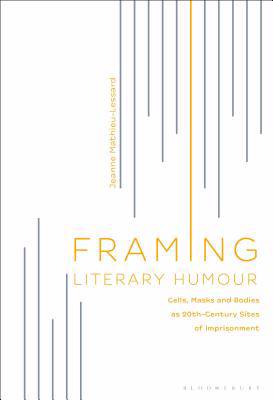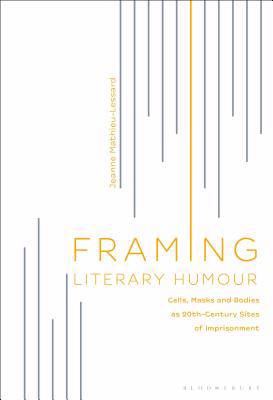
- Afhalen na 1 uur in een winkel met voorraad
- Gratis thuislevering in België vanaf € 30
- Ruim aanbod met 7 miljoen producten
- Afhalen na 1 uur in een winkel met voorraad
- Gratis thuislevering in België vanaf € 30
- Ruim aanbod met 7 miljoen producten
Zoeken
Framing Literary Humour
Cells, Masks and Bodies as 20th-Century Sites of Imprisonment
Jeanne Mathieu-Lessard
Hardcover | Engels
€ 220,45
+ 440 punten
Omschrijving
Contrary to what their oppressive design would lead us to believe, might structures of imprisonment actually incite humour? Starting from the most obvious areas of imprisonment (war camps, prison cells) and moving to the less obvious (masks, bodies), Framing Literary Humourdemonstrates how 20th-century humour in theory and in fiction cannot be fully understood without a careful look at its connection with the notion of imprisonment.
Understanding imprisonment as a concrete spatial setting or a metaphorical image, Jeanne Mathieu-Lessard analyses selected works of Romain Gary, Giovannino Guareschi, Wyndham Lewis, Vladimir Nabokov and Luigi Pirandello to reconfigure confinement as an essential structural condition for the emergence of humour.
Understanding imprisonment as a concrete spatial setting or a metaphorical image, Jeanne Mathieu-Lessard analyses selected works of Romain Gary, Giovannino Guareschi, Wyndham Lewis, Vladimir Nabokov and Luigi Pirandello to reconfigure confinement as an essential structural condition for the emergence of humour.
Specificaties
Betrokkenen
- Auteur(s):
- Uitgeverij:
Inhoud
- Aantal bladzijden:
- 208
- Taal:
- Engels
Eigenschappen
- Productcode (EAN):
- 9781501356551
- Verschijningsdatum:
- 23/01/2020
- Uitvoering:
- Hardcover
- Formaat:
- Genaaid
- Afmetingen:
- 152 mm x 229 mm
- Gewicht:
- 444 g

Alleen bij Standaard Boekhandel
+ 440 punten op je klantenkaart van Standaard Boekhandel
Beoordelingen
We publiceren alleen reviews die voldoen aan de voorwaarden voor reviews. Bekijk onze voorwaarden voor reviews.








